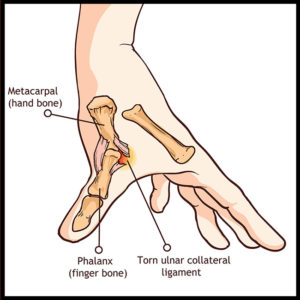
What is involved in Drew Brees’ Hand Therapy?
Drew Brees is well into the rehab process after injuring his throwing thumb in the New Orleans Saints’ Sept. 15 game against the Los Angeles Rams. In today's post, we will share opinions based on an assumption of care. We are not actively involved in Drew's treatments.
He had surgery to repair a torn ulnar collateral ligament ligament three days later. The next few weeks will be critical in determining how long he’s away from the field, said Keri Landrieu, LOTR, CHT.
“Rehab programs are all about timing,” Landrieu says, “and that is true for patients with thumb UCL repairs. In the first two weeks, exercises focus on bending and straightening the tip interphalangeal joint of the thumb and rotating the thumb’s carpometacarpal joint, where the thumb meets that hand. Gradually, the patient will progress to bending and straightening the thumb’s metacarpophalangeal joint – or knuckle.”
Brees is now several weeks into his recovery, meaning he “should be able to touch the thumb to the tip of the little finger and slide the thumb down the length of the little finger toward the palm – known as a pinky slide exercise,” says Landrieu, who serves on the Hand Therapy Certification Commission which certifies hand therapists across the country and internationally.

What’s Next For Brees?
Next comes a battery of exercises meant to improve his ability to grip and throw a football. Drew Brees has already been seen doing focused thumb movements prior to a game.
“As range of motion improves, he can begin light resistive exercises,” Landrieu adds. “As long as the thumb is held close to the palm, the therapy program progresses to a light pinch with small clothespin-like clamps that have graded springs. A patient would start this light pinching with metacarpophalangeal joint protected in a small metacarpophalangeal orthosis, or brace – leaving the rest of the thumb and hand free. Also during this time, therapy putty would be used to strengthen the fingers, without putting any strain on the thumb.”
He’s likely not ready to throw a regulation NFL football yet, but there is a way for Brees to begin getting into a game-day rhythm.
“For the arm, patients could begin throwing light objects while wearing a cuff weight on the wrist,” Landrieu sys. “The patient would start with ping-pong balls and paper, and progress to tennis balls or small foam footballs, like the ones Drew Brees threw when he rode in the Bacchus Mardi Gras parade.”
Brees reported this week that he can now brush and floss his teeth, and pick up a glass of water – movements that weren’t initially possible after his injury. There are still risks involved with any exercise regimen.
“All of this occurs while protecting the repaired ligament,” Landrieu cautions. “A patient would have to avoid putting pressure on the thumb when it is positioned out and away from the palm and hand. The repaired ligament needs time to heal onto the bone. The bone will actually grow around the ligament where it was placed back into the bone.”
“The joints of the hand and thumb are much much smaller than the knees and shoulders. Those joints can take a little more force and pressure than the tiny joints of the thumb.” Keri Landrieu, LOTR, CHT
Why Collateral Ligaments are Critical for Quarterbacks

This type of repair generally takes about six weeks to fully heal, a testament to the differences between an injury to your hand and other joints. “The joints of the hand and thumb are much much smaller than the knees and shoulders,” Landrieu says. “Those joints can take a little more force and pressure than the tiny joints of the thumb.”
Brees says he hopes to be back sooner than expected. A six-week layoff would have him returning as the Saints play host to the Arizona Cardinals in Week 8. That game is followed by a bye week, and then a heated matchup against divisional rival Atlanta.
"The rule ‘no pain, no gain,’ does not usually apply here. A patient or athlete should listen to their body. " Keri Landrieu, LOTR, CHT
Whether Brees achieves that goal will come down to how his thumb responds to rehab. Landrieu says his body will tell him if he’s rushing things.
“Pain is a big indicator that you are progressing too quickly,” she says. “The rule ‘no pain, no gain,’ does not usually apply here. A patient or athlete should listen to their body. Swelling and stiffness can be more painful than the actual rehab process.”
Work with a Hand Specialist
If you have a hand injury and would like to have it evaluated, contact us today for an appointment. The earlier the diagnosis, the more treatment options are available. Dr. Donnelly and the specialists at Pontchartrain Orthopedic and Sports Medicine will provide a thorough evaluation and explore the latest treatment options available to you.
This site is not intended to and does not provide medical advice, professional diagnosis, opinion, treatment or services to you or to any other individual. Through this website and links to other websites, Brandon P. Donnelly, MD provides general information for educational purposes only. The content provided in this website and links, is not a substitute for medical care or treatment. You should not use this information in place of a consultation or the advice of your healthcare provider. Brandon P. Donnelly, MD is not liable or responsible for any advice, course of treatment, diagnosis or any other information, services or product you obtain through this site.

